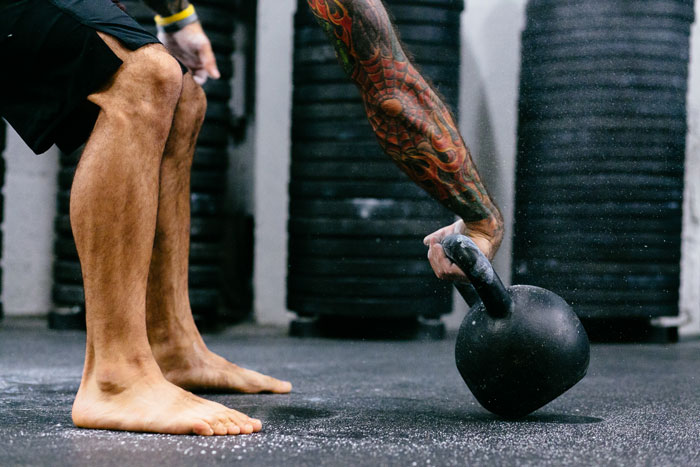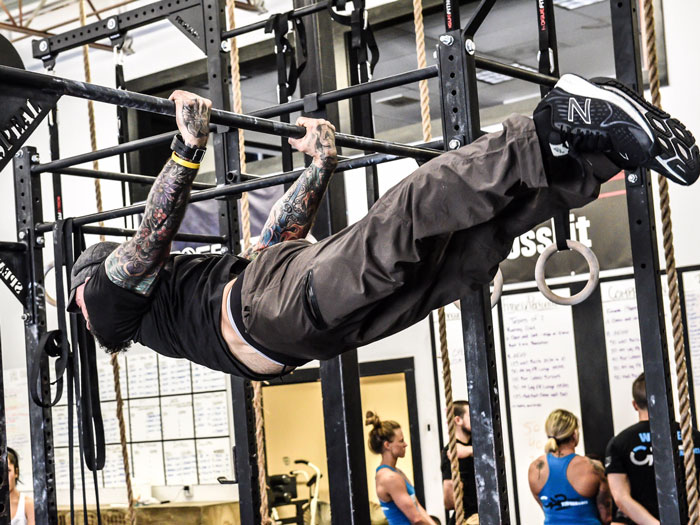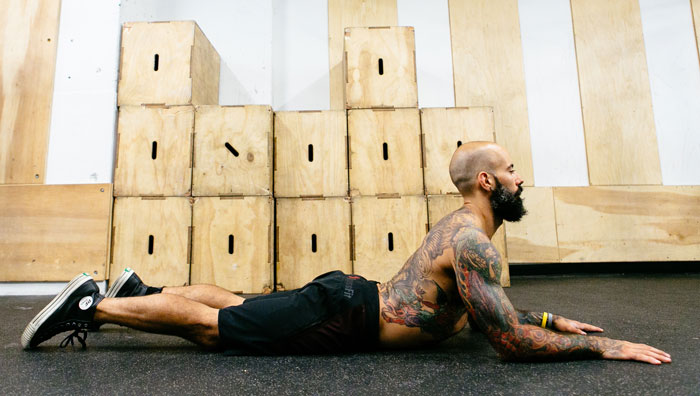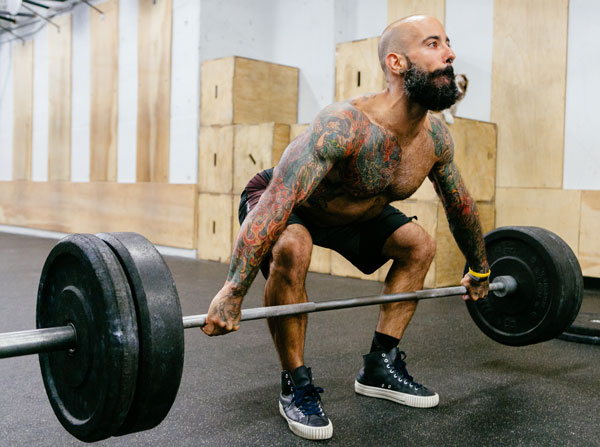
Lets face it; exercising consistently is hard work. Showing up to your local gym, box or calisthenics park on a regular basis takes a level of commitment that most people just do not have these days. Knowing that over 90% of us who set out to achieve our New Year’s resolutions are doomed to fail, it’s easy to give up once we begin to struggle because “everyone else is doing it.” Let’s take a look at a few variables we can control which will help us achieve success in our journey to a greater level of fitness.
Know Your “Whys”—Then Create a Support Group
The first step in achieving anything great is establishing a goal. It doesn’t matter what your goal is (we all have different interests and priorities), but you need to pick something that’s important to you. When I say important, I don’t mean “It would be cool if I could press the beast kettlebell some day.” The goal should be something that tickles you somehow, and creates a visceral response. You need a reason that achieving this goal will make your life better.
The journey towards your goal should make you better physically, emotionally, spiritually, or provide a tremendous sense of accomplishment. Understanding your “whys” will get you through your training on the days when you just don’t feel like doing it.
Once you know your “whys” it’s time to align yourself with people who will support your journey—rather than instigate the negative self-talk that can derail your commitment, potential or ability. Your family, your partner, and your fitness community all need to be supportive of your goals. If any of these peers are not on board with your vision, it’s time to find a new support network that will lift you up rather than keep you down.

Rule # 1 – It’s Your Fault
This rule will pop up over and over again. Taking personal ownership of your journey is the first priority. Too often people are quick to point fingers at their coach, their programming, their financial situation, their stressful job, etc… Remember excuses are like a$$holes, we all have them. It’s time to cut the crap and own it.
Ask yourself: are you doing everything in your power to be compliant with your coach, programming, or nutrition guidelines? I get it. Life is a four letter word, and sometimes things happen that get in the way. You had to stay late at work, your kids got sick, or you slept in. These things happen to everyone so don’t be like everyone else and use them as a scapegoat. Accept that your timeline just got pushed back a little bit, it’s OK.
Take Care of Your Body and Focus on the ‘Unsexy’ Stuff
This is the easy part, right? We dig fitness, so clearly we’re doing all the right things. Unfortunately, working out consistently is just a tiny part of the equation. What you do outside the gym comes into play with achieving your goals more than what you’re doing inside the gym (assuming you’re training at the correct intensities and providing the adequate dose response).
Be attentive to lifestyle factors that affect your training. Get eight hours of sleep at night. Go to bed and get up in the morning at the same time EVERY DAY. You’re a night owl? BOGUS! In this instance, ignore your preferences and understand that as humans we naturally align with the circadian rhythm of the sun. That means when the sun rises, we should be rising. When the sun is setting, our bodies are entering shut down mode. Our hormone levels rise and fall with the sun, so regardless if you want to stay up late and watch your favorite show, under the hood your cortisol levels are high and your body needs sleep to recover. Understand that eight hours of sleep from 12am-8am is not as good as getting eight hours of sleep from 10pm-6am. Go to bed early if you really want to be the best you possible. If you don’t get the results desired, revert to Rule #1.

Be Authentic
This may be the most challenging variable. Our egos push us to think and act in ways that aren’t necessarily in our best interests. Be honest with your abilities. If you’re currently following a squat cycle based on percentages, use numbers that are extrapolated off your most recent max (within the past three months). Do not use numbers based off the max that you want to hit. If you haven’t tested before you start the squat cycle, then test and know where you currently stand.
Authenticity also applies to lifestyle factors as well as movement quality. If you aren’t sleeping properly, you won’t make the same progress from your efforts. If you aren’t eating to support your activity levels or goals, progress may not happen at all. Stress levels through the roof? Your body can only handle so much stress before it implodes or shuts down. Remember: exercise is a mechanical stress and it needs to be factored into the total equation. Everyone has the capacity to tolerate different levels of stress. It is not a one-size-fits-all formula.
Are you able to reach your arms overhead without lifting your ribcage, or do you “fake” the mobility? Common sense tells me that it may not be the safest idea to begin working on your full press bridge until you’ve achieved adequate ranges of shoulder and rib cage mobility—or you will risk crashing down on your head. Again, own it and fix the things you have control over. Remember, “Your ego is not your amigo.”
Do Your Homework
Your homework may include showing up on time and getting your regular training session done. But I’m not just referring to collecting sets and reps of lifts or 400m run repeats. In this case I’m referring to improving your foundation. Grey Cook, MSPT has said, “First move well, then move often.” Prioritize creating balance in your body. Many of us have postural deviations, tight muscles or strength imbalances from years of playing competitive sports or from years of sitting at a desk trying to build a career. The body is an amazing machine and will find a way to become strong in positions or movements that are frequently utilized. Dedicate time in every training session to improving your squat mobility, overhead position, or re-pattern and strengthen an (often) under-appreciated core. I know this stuff isn’t as fun as picking up heavy things or unlocking a new calisthenics move, but without proper and balanced movement, you may never reach your goals. Worse yet, you may expedite an impending injury on the way.
Learn Your Body’s Rate of Adaptation
The ability to respond to training can be simplified into two categories: are you a fast adapter or are you a slow adapter? A slow adapter is an individual that will need to practice more patience with their journey. If you’re a fast adapter, congratulations! To some extent you’ve won the genetic lottery. Fast adapters can look at a new movement and duplicate it almost flawlessly within their first few attempts—assuming they have adequate levels of strength and mobility. Slow adapters may require weeks of proper patterning before they acquire some level of competency. You’ll learn your rate of adaptation along your journey with some trial and error. If you adapt quickly, still focus on the building blocks of the basics to promote longevity and durability. If you’re a slow adapter, don’t get hard on yourself and definitely don’t fall into the trap of comparing yourself to others. Embrace the journey you’re on. It just might take longer to build strength or develop new skills compared to some of your peers.

These are just a handful of factors that can play a big role in whether or not you achieve something great. We all have the power to make big improvements to our current level of fitness. It helps to take a step back and look through a wider lens to observe what’s really going on. Go ahead and try to apply some of these concepts and notice if your progress improves. Keep in mind that fitness is a highly individual journey. We all need different levels of focus on each of these factors due to unique starting points, levels of commitment and genetic predispositions. When in doubt, revert to Rule #1.
****
Angelo Gala is both a Master RKC, PCC Team Leader and Co-Owner of EDX Fitness in Lafayette, CO. He has been a fitness professional for 15 years working day to day with a wide range of clientele. He helps the average “Joe” get fit and out of pain and prepares athletes to qualify and compete at the CrossFit Games. His specialties include improving restricted movement, getting strong(er) and energy system development (anything that elevates the heart rate). Angelo is available for remote coaching and on-site workshops. For scheduling he can be reached at a.angelo.gala@gmail.com.